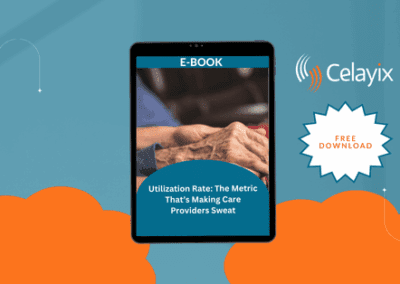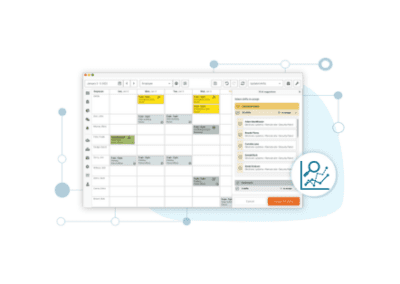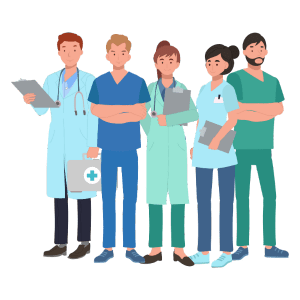
According to the American Hospital Association, “good communication among patients, families, and caregivers is becoming increasingly difficult to establish in today’s healthcare system.” Hospital stays are becoming shorter, medical treatment is becoming more technologically advanced, resources are few, and there is an increasing demand for patients and families to have more information about, and engage in, care choices. As a result, the importance of communication between staff and family members is increasing, especially in the long-term healthcare industry.
In our blog, we address how communication is changing in long-term healthcare and what is the importance of effective communication skills in the changing landscape.
Changing Landscape in Long-term Healthcare
Technology is everywhere around us, and its use is only increasing. Over 1.3 billion people will use digital health in 2024, according to Statista.
This growing use of technology has also altered how individuals consume health information, emphasizing the significance of communication strategies in health care. According to a 2020 study from HealthIT, almost 60% of Americans had online access to their health information in 2020, and approximately 40% of these persons used it at least once.
As technology advances, healthcare providers may use new communication methods to become influential field leaders. But first, let’s answer what the importance of communication is.
What is the Importance of Communication in Healthcare?
Over the last three decades, studies have demonstrated that a clinician’s capacity to explain, listen, and empathize with patients may significantly impact their biological and functional health outcomes, as well as their treatment experience and satisfaction.
Effective communication of healthcare information can promote adherence to treatment and self-management and empower patients and their family members to engage as full participants in their care.
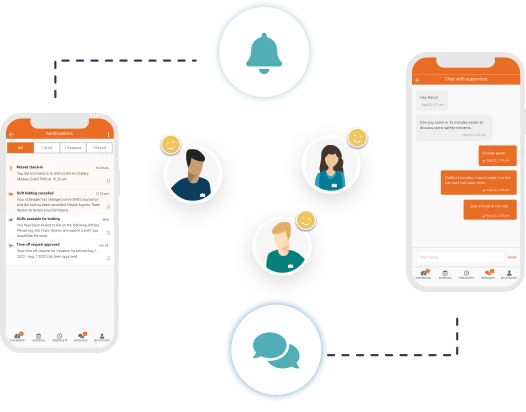
With so much evidence pointing to a correlation between efficient communication and improved health outcomes, an organized approach to health communication may significantly enhance healthcare delivery.
However, the value of patient-provider contact goes far beyond the inpatient environment. When patients are no longer under the care of healthcare professionals, the care team should maintain contact with them to guarantee safe outcomes and develop meaningful connections with care providers.
Effective communication is becoming increasingly crucial in health care with the rising presence of technology. It can assist in limiting the impact of health misinformation, which could lead to patients making poor or incorrect health decisions. It can also aid in communicating with other healthcare providers who may require to coordinate treatment across multiple sites. This can lead to more possibilities for providing care.
Communication in Healthcare is Key to Safe Transitions
Transitioning from one healthcare facility to another is stressful for patients and families. Transitioning from acute care to home or from wellness to chronic illness treatment all create the potential to overlook critical parts of healthcare communication – and patient and family satisfaction.
Consider a period when you had to handle a patient care transition on your own or as a caregiver for a loved one. These are times of increased worry and concern about what is to come.
From the standpoint of health communication, there are periods when critical healthcare information from clinicians to patients is in danger of not being conveyed, misinterpreted, or being understood but dismissed.
Importance of Communication in Discharge Planning
Hospital discharge, in particular, may be difficult for patients and their loved ones. Providers must acquire and present information customized to the patient’s functional condition, expressed preferences, and follow-up care instructions during discharge planning. This can be intrinsically very complicated.
Due to time constraints, doctors often require to hurry through discharge education and instructions. This can severely influence the patient’s comprehension and, as a result, adherence to the treatment plan. Less than a quarter of patients report understanding the discharge instructions.
While they are not clinical concerns, they can have a significant impact. Patients may feel more at ease at home with the support of family and friends and away from the rigors of a hospital or post-acute facility. However, this transition can be difficult for others and lead to crucial gaps in patient care.
Types of Communication in Healthcare
Because technology continually evolves, healthcare professionals must constantly increase communication to meet patient expectations. Numerous communication methods in health care can assist physicians in keeping ahead of the curve in today’s world.

Patient Portals Provide Access to Health Information
Healthcare institutions can create patient portals allowing individuals to join and have privileged access to their health information. Educational health information pertinent to the patient’s health requirements might be posted on the patient’s portal.
Clinical summaries can be made available. These summaries can include a recap of the patient’s most recent appointment or explanations of recent test findings. The summary may also include suggestions, such as the necessity for follow-up consultation.
Emailing Can Help Improve the Patient-Provider Relationship
Healthcare practitioners, who were earlier apprehensive of utilizing email as a communication tool, are now discovering that it saves them a significant amount of time. Responding to patient emails is far faster during downtimes than returning phone calls. Many emails contain simple inquiries that may be swiftly answered or used as reminders to make orders to other suppliers.
Medication requests may also be readily assessed and answered by email, which saves time over phone calls.
Texting Can Help Patients Stay Informed
Text messaging may be an excellent method for healthcare practitioners to reach out to patients with critical information. Texting may be used to send appointment reminders, prescription reminders, and patient portal notifications. It can also contribute to the security of a patient’s portal information by serving as a vital component of patient security measures such as two-factor login authentication.
Social media can reach a large number of people.
There doesn’t seem to be any other factor that shows the importance of communication than social media. Social media is one of the least expensive ways to reach a considerable number of people. It can offer general queries and information. Addressing negative comments published on social media platforms can potentially change public perception of your healthcare facility. It can also promote health-related special events at an institution.
During public health crises, information may be given to provide people with accurate facts and direction. Subsequently, this prevents the spread of disinformation and fear.
Different People Can Be Targeted by Apps and Websites
Apps can help healthcare practitioners interact with and target diverse groups of patients. They may have a website providing educational health information for individuals looking for it. They may also offer videos of real people to demonstrate how therapy works.

Healthcare practitioners may create an app that reminds patients to participate in healthy behaviours like exercising or checking their blood sugar levels. Patients with comparable difficulties can also assist one another through online communities. Patients can also be provided live chat.
With Celayix, we provide essential tools for employers to communicate with their healthcare staff and solve various scheduling problems. The Celayix mobile shift scheduling app is compatible with any version of Android or iOS.
Caregivers and nurses will receive automated shift reminders, rapid alerts of shift assignments, shift confirmations, and the task or activity verification using Celayix. Caregivers will benefit from flexible self-scheduling, shift bidding, shift swapping, pre-shift health checks, and automatic safety checks while working alone. With Celayix, you can give your employees more control over their schedules, boost morale, and prevent caregiver fatigue.
The True Importance of Communication in Healthcare: The Profound Impact on Patients

In healthcare, communication creates trust between patients and professionals. Patients who do not trust healthcare institutions are less likely to volunteer vital medical and non-medical information that significantly impacts their health. Outside of therapeutic engagements, patient trust is created through perceptions and micro-encounters. Healthcare executives may not only build trust by offering targeted and timely communications. However, they can identify opportunities to improve patient care.
The bottom line is that a hospital visit is upsetting for patients and their families. It may be frightening for patients to question what is going on or to request more information. This feeling of intimidation is frequently exacerbated by a loss of functionality, which is connected to a loss of control.
Through patient-centred communication, healthcare administrators have the potential to protect patients’ dignity amid disease and uncertainty. Communication structures must extend well beyond the four walls of the healthcare institution to reflect the complexity of today’s healthcare journey to meet patients in their time of need. Dignified treatment requires effective communication mechanisms, and patients deserve nothing less. The importance of communication in healthcare is only like to increase from here.
